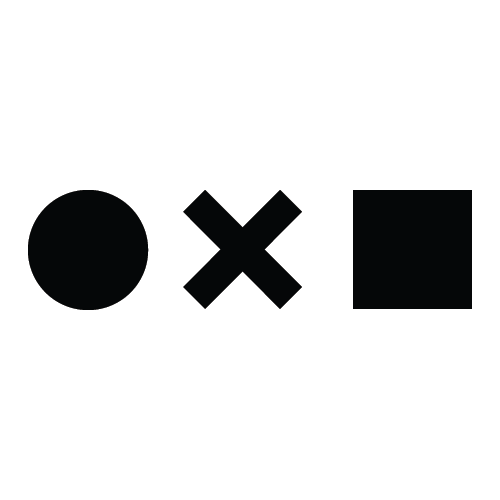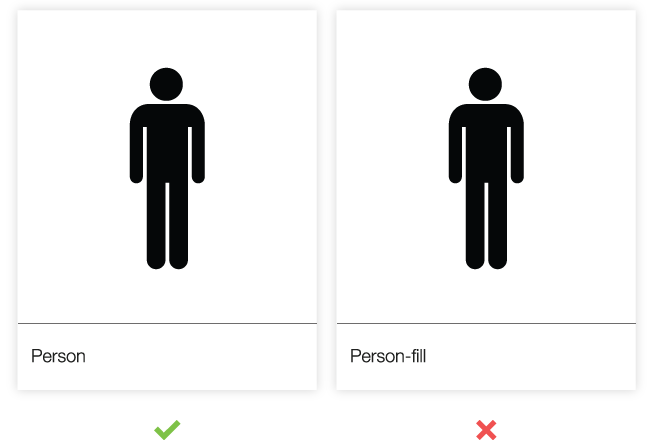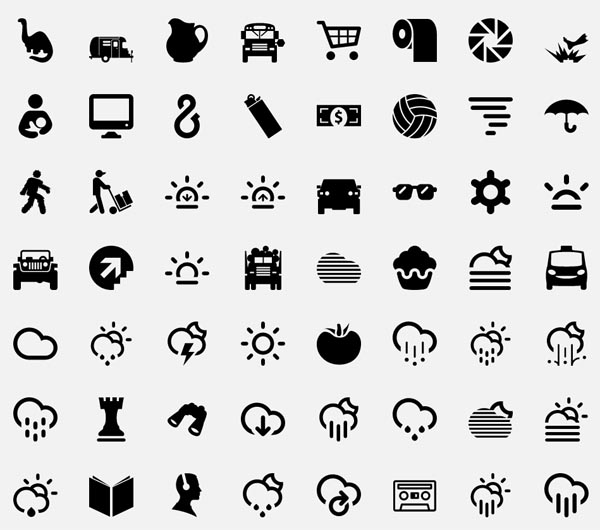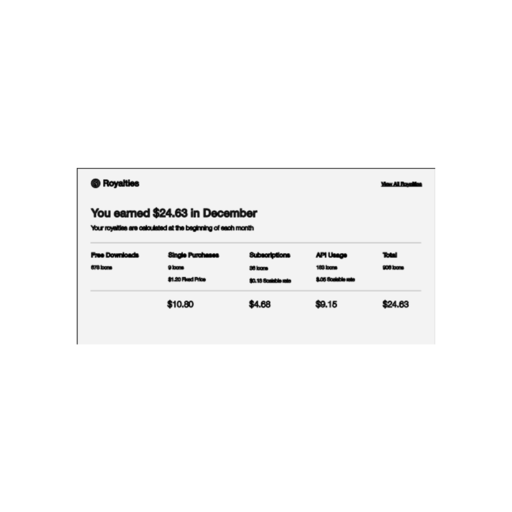Hundreds of artists and designers have contributed their own icons to the project, and the language they're creating is quite a sight. Some of the icons are silly, like the cupcake- and donut-laden Sugar Suite collection. Some are beautiful, and others are very clear visual representations. The project itself is a huge, ambitious undertaking, and it's neat to see it grow as more people add their symbols. Some icon sets are repetitive; trendy mustaches and food items pop up everywhere, while more serious icons may not get the attention they need.
Practical uses include helping autistic kids communicate; a fist icon from the Noun Project was used extensively during the Occupy Wall Street protests. Parents need to know that the Noun Project is a website that's creating a global visual language of symbols and icons. With the hope that this language will help people from all over the world communicate, they're accepting icons from numerous artists and designers. Students can learn that not all languages are verbal; people have used symbols to communicate for thousands of years. They can also think critically about icons the world may be missing.
Noun Project Icons For Everything If they decide to create their own icon, kids will learn design skills as they go through the process of drawing an image and making it into a file they can upload and share with others. Students will use their imagination to think about what icons they'd like to invent and how to best represent a word using a picture. It's also fun to guess what each icon means before you click on it!
Be aware that you need to have your own design software to create an icon -- the Noun Project provides guidelines and advice, but it's ultimately a repository for content and not a design tool. The Noun Project is an ever-expanding library of icons created by designers from around the world. Anyone can design and upload icons to the Noun Project. If your icons are approved, they are added to the collection, and you get a fee anytime someone purchases your icons, or downloads them via subscription access. For full details on submitting your icons, check out the Creators page at the Noun Project. Hundreds of artists and designers have contributed their own icons to the project, and, all together, the language they're creating is quite a sight.
The Noun Project's mission is to simplify global communication through a shared visual language. They consider their ever-growing collection of icons to be a new visual dictionary of sorts. By crowd sourcing icons from hundreds of designers, they provide an impressively extensive bank of images. Just look at the results that come up when you search for "tree" icons. I am thinking of utilizing this resource with students next year as well.
In the About section, the website provides a design handbook along with details about creating and adding to the Noun Project collection. This could be a great activity for graphic design and marketing classes. As a visual language tool, collaborate with English Language Arts or Social Studies teachers to use the icons as representation of an idea, concept, or vocabulary terms. Students can take the lead and show their creativity in a compelling manner. As you prep for the beginning of the year and look for icons to add to signage, flyers, and your library website, the Noun Project can become a great resource. The website is a visual language toolbox with simple black-and-white images.
Try "scuba diver" and see what great images pop up. THE NOUN PROJECT is a website that aims to build a global visual language of symbols and icons that everyone can understand. You can sign up for a free account with an email address and a password. Kids can learn that not all languages are verbal; people have used symbols to communicate for thousands of years.
They also can learn to look out for symbols they recognize and think critically about icons the world may be missing. If they decide to create their own icons, kids will learn design skills as they go through the process of drawing an image and making it into a file they can upload and share with others. The Noun Project really inspires kids' creativity while opening their minds about the ways humans communicate. Today, Noun Project has a full-time staff of more than a dozen people. It has also helped create icons for complex topics being dealt with on Wikipedia, by the Red Cross, and at the New York Times. Part of that revenue, too, is shared with the icon originators.
While Noun Project won't disclose exact subscription rates, revenues are up 300% since launching; they expect to turn a profit for the first time this year. If Squarespace's participation is any indicator, the new system should provide a lot more stability than either T-shirts or the old a la carte model . Unless you have a Pro account, all of The Noun Project's icons are only available to download in black. You can download and then change the color yourself using graphic design software. The Noun Project suggests Illustrator or Inkscape. You might not have access to Illustrator, and Inkscape, while free, is cumbersome to install and use.
Instead, I'd like to show you how I recolor Noun Project icons with Method Draw. It's a free web app and requires no installation and no log in. A Noun Project API would enable a next generation of mobile and web application apps, as well as other visualization and big data analysis tools to integrate consistent imagery. Makers of integrated development environments could provide button, icon and other UI components with a wealth of meaningful icons, that could become the new default in modern apps. Think how Twitter bootstrap is raising the bar in overall app user interface quality? Love it or not, Twitter Bootstrap has made things look better, and consistent use of the Noun Project images could go even further.
Just joined the noun project and they have some great icons! The only problem is that anytime I try to resize the icons to make them smaller they seem to get a bit fuzzy. Doesn't matter if I resize the png or svg file format. I export the files to png and use them for a website. To download icons, set up an account using your email address.
Follow the prompts and finally choose Creative Commons. The image will download to your computer with the proper credit to the creator. Yes, you can even upgrade for $40 a year to access Pro features. I do have an educational pro account, which is well worth the small amount of money because it lets me use everything legally without attribution, and can customize the colors exactly as desired.
For instance, Squarespace, a major web publishing platform, announced today that it will be using the library to launch its own DIY logo builder. The model has helped the Noun Project dramatically increase revenue, and the company expects to turn a profit for the first time this year. The Noun Project API would allow innovative new ways to use Noun Project icons in the physical world as well as the digital. This process wouldn't be a one-way street either.
Without an API, the usage of Noun Project images is a manual process, leaving attribution up to the user. This would provide The Noun Project network with easy attribution, which doesn't just credit designers, it will be the basis of The Noun Project marketing. Imagine being able to visualize the entire syndication for a single icon! The Noun Project was co-founded by Sofya Polyakov, Edward Boatman, and Scott Thomas and is headed by Polyakov. Site design was by the firm Simple.Honest.Work, with mentoring from the Designer Fund.
Icons are a great way to visually illustrate any idea. With this add-on, you can quickly find the icon you need, change its color and size, and insert it right into your slide or doc with just one click, all without leaving your workflow. Choose from a huge, ever-growing collection of high-quality symbols, built by creatives from around the world.
You can also access all the icons from the website by creating a free account. When you're logged in, you can download icons in SVG or PNG formats. Once you choose the file format you want, you pick your licensing terms. You can download and use icons for free by choosing a Creative Commons license. Normally an embeddable strategy for an API is in the background, relinquished to just one of the tools in the toolbox.
With the Noun Project I think a healthy embeddable strategy would be front and center, providing a wide array of buttons, badges, widgets and other items users could syndicate across the web. The library of embeddable tools should be open for submission, much like the core of the Noun Project. Designers could generate custom button sets, badges and other embeddables for users to choose from. The Noun Project's embeddable strategy would make the Noun Project API accessible to everyone, even non-developers.
If you download an icon for your own use, you either must attribute it to the designer or pay a fee (usually $1.99) to purchase it unattributed. If someone purchases your design, the money will be deposited directly into your PayPal account monthly. The Noun Project uses Creative Commons licensing to give designers the creative rights to own and share their work as desired. If you download an icon for your own use, you must either attribute it to the designer or pay a fee (usually $1.99) to purchase it unattributed. You can use the Noun Project in an English, history, foreign language, or art class; its uses are pretty versatile. For example, ask students to create their own set of symbols and then ask them to trade with another student to see how they translate.
Students will learn that it's tricky to communicate exactly what you mean through pictures. Ask kids in a Spanish class to create flashcards using Noun Project icons, or ask an ELL class to translate icons into English. When you find an icon you want to use, click the download button and a .zip file will be downloaded to your computer. Inside the .zip file is a .svg file, which is a Scalable Vector Graphics file. This type of file is common in the design world and will need to be opened with a program that works with vector images like Adobe Illustrator or the open-source programInkscape, which is free. There is a great little Introductory Guide to Inkscape that will get you started using the program.
Whether you are creating an infographic, illustration, brand, or logo, clear and concise icons can make visual communication easy. But designing a simple clean icon can be harder than it looks, and finding useable images online can be even trickier. Enter The Noun Project, an easy to use online goldmine of professionally designed icons. The Noun Project has generated interest and new symbols by hosting a series of "Iconathons", the first of which was held in the summer of 2011. The idea for the event came from Chacha Sikes, who was at the time a fellow at Code for America. The Noun Project is a website that aggregates and catalogs symbols that are created and uploaded by graphic designers around the world.
Based in Los Angeles, the project functions both as a resource for people in search of typographic symbols and a design history of the genre. Boatman helped spot the need for a Noun Project back in 2005. That made his job of telegraphing simple concepts in PowerPoint presentations a lot more complicated. Eventually, he and his co-founders began uploading icons from many of the existing emoji galleries to create a formal registry. I love creating videos and sprinkling in icons from The Noun Project.
I edit videos in the Camtasia video editing program, which gives you plenty of control on how those icons appear and what they do. You can even create videos featuring icons by using a screencasting tool like Screencastify to record your screen. Create presentation slides that feature icons and record your screen with the slides on it. Or, create a Google Drawing with icons and record your screen as you move the icons around on the screen. Using badges to provide a bit of extra motivation for learners is hot in education right now. Video game platforms offer badges as incentive for playing.
Snapchat and other social media use a form of them in "streaks" -- posting consecutively for a number of days. Looking to incorporate badging in your classroom? Icons from The Noun Project can be a great way to find those badges. You can add borders and other elements to an icon-based badge in Google Drawings. Use some of the same suggestions that Mandi Tolen makes in this post on creating custom Bitmojis.
I have been in love with the platform since then. I appreciate the UX of the simple and minimal approach it has while allowing new/existing graphic/UI designers to generate passive income. I urge all the designers out there to spend some time to create a couple of icons to upload to Noun and experience what I've. The Noun Project has a huge collection of symbols and icons. You can find an image to illustrate just about any idea.
You have permission to use The Noun Project's images in your own project because they are covered under a Creative Commons Attributionor a Public Domainlicense. Downloading from The Noun Project does require a free account. The Noun Project is a collection of over 2 Million curated icons and symbols, created by a global community. Using nouns/icons for signage and symbols is a highly-effective form of communication, transcending different languages and cultures. You can use the icons from The Noun Project to advertise, market, or communicate just about anything.
Trying to come up with a simple logo for your club or group? Grab an icon that symbolizes the message of your team. Want a quick way to show students which storage bin to place the recyclables into? It says so right in the description what the model for this product is. Paying for icons on this plug-in is the same model as any other creative licensing product. This product isn't meant for one time users working on a single project - it's for creatives and business/agencies who do mass iconography for clients.
The add-on is free to use with access to 100 of our most frequently used pictograms. Or unlock the entire collection of over 1 million royalty-free icons, as well as full access to all Pro features, for $39.99 per year. Special discount is available for the Education Community. All proceeds are shared directly with our creative community. Eugene, you're an expert and long-time InDesign user.
You've probably got an advanced knowledge of not only InDesign but also Illustrator and Photoshop. For you, designing an icon is a "piece of cake." There are many new and beginning users who would love the chance to get access to icons like those. If so, check out the add-ons available from the Noun Project.
They give you access to over one million royalty-free icons . You can also access the icons for free with a Creative Commons license via the website. Add-ons are also available for Microsoft Office apps. I strongly believe that it order to fulfill its full vision, the Noun Project has to have an API. Kids will feel good knowing they're contributing to a global visual language that can help people communicate. Last month I got an email from the friendly Noun Project robots letting me know that they had sent me $14.76 from sales of my icons.
While that may seem a pretty small sum to end up in my pocket, that's roughly 15 people who thought my icons were valuable enough to purchase. Coming from a business where I work and get paid once, there is something I love about the idea that I can continue making money on work that I've finished. Thenoun uploader is a tool that helps people upload to Commons icons previously downloaded from The Noun Project. The tool should allow to upload one or many icons as needed whilst making sure the upload adds relevant information to the file on Commons.






















No comments:
Post a Comment
Note: Only a member of this blog may post a comment.